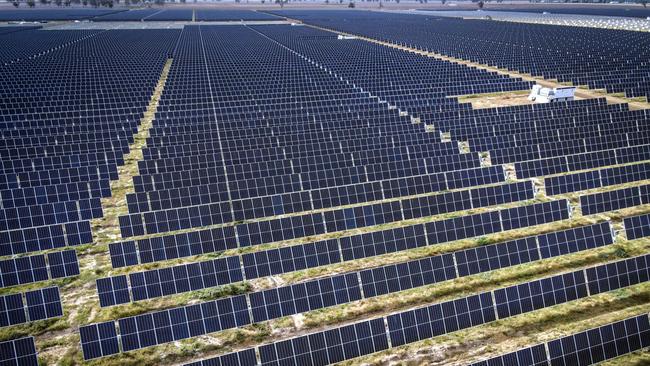Wind, solar investment crucial to cheaper energy

At best, it causes families to defer their dreams and aspirations.
At worst it causes parents to struggle to feed their children and people to forgo medicines and surgeries. The consequences could not be more serious.
It can be difficult to know who to blame, but with certain costs there are clear causes. Make no mistake, indecision over energy policy costs real-world money. Indecision drives up power prices and takes money away from struggling families.
Here’s how and it’s fairly straightforward; investors need certainty.
Our coal-fired power stations are closing and the industry stands ready to build the
next fleet of power stations to keep the lights on and power prices down. The cheapest form of generation is solar and wind firmed by grid-scale storage, including pumped hydro and batteries. The debate on that is finished.
It’s finished because Australia has the best wind and solar resource anywhere in the
world.

However, the sure-fire way to stop investors in their tracks is with an absurd carousel
of revolving and evolving energy policies, each more mystifying than the last.
That’s what energy investors have suffered through for much of the prior decade. The federal Coalition’s latest push for nuclear is only its latest in a dizzying array of energy policies it has put forward in the last decade.
Remember, the uncertainty itself stifles investment and drives up power prices. Investors are not interested in building nuclear power stations for the Australian market. Not a bit.
No community wants them built on their beaches and waterways either, but that’s a
separate matter.
It’s important to understand the Coalition’s nuclear ambitions.
What is being proposed is replacing coal-fired power stations with reactors fuelled by $387bn of taxpayers’ money. That’s because private investors won’t go near it as they know it’s too expensive, too risky, and not nearly flexible enough to meet our future energy demand.
The concept of government throwing that amount of taxpayer money at building energy generation hasn’t been contemplated for decades. It’s a Soviet-era energy policy.
Power prices are far too high.
The energy market is complicated, but essentially the laws of supply and demand are what drives the market. You build more generation, which increases supply and puts downward pressure on rising prices.
So, we need to build, and we need to build quickly.
The families and businesses driving our rooftop solar revolution know it. Every time power prices rise, they take matters into their own hands, and it is a delight to see.
More than 3.5 million Australian homes have already installed solar power, and it’s growing rapidly in regional towns and across the mortgage belts of Australia.
There is also a pipeline of grid-scale solar and wind farms under construction and ready to be built. Even if you love nuclear, that will take two decades to move its first electron.
Renewables will have crossed the finish line and replaced coal before nuclear pulls on its sneakers. And without renewables, it would be tying its laces in the dark.
This is a reality now well understood by governments right across Australia – state and federal.
They realise the path to lowering power prices and easing cost of living pressures is to accelerate the shift to renewable energy. Its why Joe Biden named his enormous clean energy package the “Inflation Reduction Act”.
The trouble is we are still paying the price for years of indecision and it will take some time for this governments actions to wash through to encourage new green shoots of investment.
Governments right across the country now have a critical role to play in breaking down the barriers that have accumulated over the past decade.
We need rigorous planning regulations that ensure the right outcomes for communities. However, there comes a point where red tape will see projects cancelled and built overseas, with jobs and lower power prices accruing elsewhere.
Playing “will they or won’t they” games with coal-fired power stations chills investment and exacerbates the very problem they aim to solve by keeping these unreliable coal generators online.
Ideally, energy would cease to be a political football; it is too important for that. Voters would surely value bipartisan support for energy policy that pins its ears back and races toward solving our challenges.
With nuclear being pushed by a small, albeit loud collection of voices, it might be wishful thinking to call for both major parties to come together on sensible renewable energy policy, but it would propel Australia back to the top of the leaderboard in terms of investment attraction.
The market needs clear signals, and this isn’t a time to back down. It’s time to double down.
We need to stop creating and chasing distractions and build what needs to be built, for everyone’s sake.
Kane Thornton is chief executive of the Clean Energy Council


The rising cost of living is an unyielding, corrosive force that impacts us all but disproportionately strikes our most vulnerable.